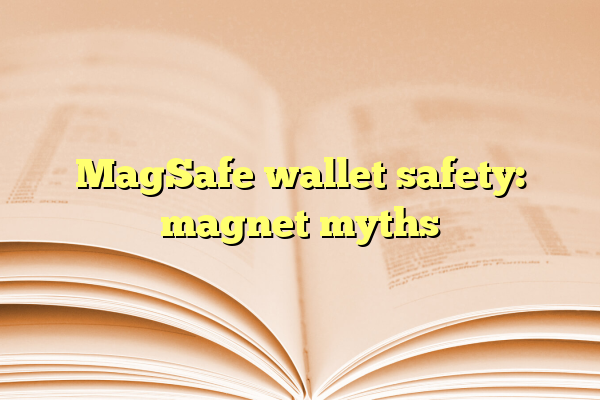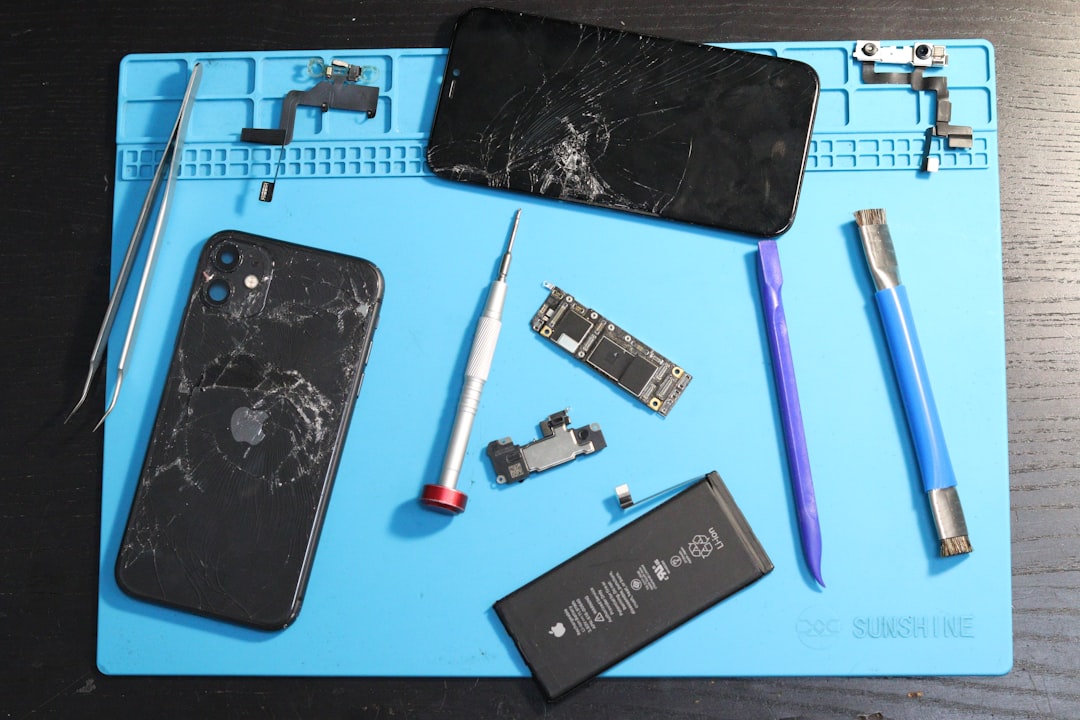
MagSafe wallet safety: magnet myths
MagSafe wallets have become a popular accessory for iPhone users, offering a sleek and convenient way to carry essential cards without the bulk of a traditional wallet. However, the use of magnets in these accessories has sparked questions and concerns about safety and potential risks. Could the magnets in a MagSafe wallet damage your cards, interfere with electronics, or even pose health risks? In this article, we debunk common myths surrounding MagSafe wallet safety and provide a clear, realistic look at the science behind the magnet technology.
Contents
TL;DR
MagSafe wallets use carefully controlled magnetic fields that are safe for everyday use. Concerns about magnets damaging credit cards or electronics are largely outdated or based on exaggerated assumptions. With modern chip technology and shielding practices, the risks are minimal to nonexistent. Understanding the facts helps consumers make informed and confident decisions about using MagSafe wallets.
Understanding MagSafe Technology
Apple’s MagSafe system uses a ring of neodymium magnets embedded in both the iPhone and compatible accessories, such as wallets, chargers, and mounts. This allows magnetic accessories to snap perfectly into place — a feature that enhances user experience without compromising safety.
The magnets in MagSafe products are relatively low in strength, and are specifically designed to remain within established safety parameters. Apple and third-party accessory manufacturers follow strict standards to ensure they don’t interfere with the internal components of the phone or consumer electronics at large.
Common Magnet Myths Debunked
Myth 1: Magnets Will Erase Your Credit Card Data
This is perhaps the most prevalent concern — that magnets will demagnetize credit or debit cards. The origin of this myth dates back to older magnetic stripe cards that used low coercivity (LoCo) magnetic strips, which were indeed more vulnerable to magnetic fields.
However, most modern cards today use high coercivity (HiCo) magnetic stripes and, more importantly, EMV chip technology, which are far more resilient to magnetic exposure. A MagSafe wallet may be magnetized, but the strength of the magnets is simply not enough to affect your card’s data.
Fact: Numerous independent tests have shown that credit and debit cards stored in a MagSafe wallet retain all functionality with no data loss or demagnetization.
Myth 2: MagSafe Interferes with Medical Devices
Concerns about magnets interfering with pacemakers and defibrillators are not unfounded, as strong magnetic fields can in certain conditions interfere with electronic medical devices. However, Apple has provided guidance regarding safe distances, generally recommending that the iPhone and MagSafe accessories be kept at least six inches (15 cm) away from implanted medical devices.
In daily use, this is rarely an issue since the wallet is attached to your phone, which is typically carried in a pants pocket, shirt pocket, or handbag. Unless someone habitually stores their phone directly over a medical implant, the risk is negligible.
Always consult your medical provider for personalized guidance if you rely on such devices.
Myth 3: MagSafe Demagnetizes Hotel Room Keys
This myth has more basis in fact than others — some older hotel key cards are still encoded using vulnerable LoCo magnetic stripes. If a MagSafe wallet is placed too closely or directly pressed against one of these cards for extended periods, it could have an impact.
However, even in this case, the risk is minimal with casual, everyday use. If you’re concerned about this, simply position hotel key cards away from the direct magnet-facing side of the wallet or store them separately during your stay.
The Science Behind the Safety
To fully appreciate the safety of MagSafe technology, it helps to understand both the strength and nature of the magnets it uses. A typical neodymium magnet in a MagSafe accessory has a field strength of less than 50 millitesla — significantly lower than what would be required to impact personal electronics or magnetic storage devices.
- Flash memory in phones and USB drives is not affected by magnetism.
- Credit card chips operate based on contactless or EMV standards and are not magnet-dependent.
- Magnets are shielded within MagSafe accessories to limit stray magnetic fields.

Apple also performs extensive in-house and regulatory testing to ensure that MagSafe devices meet international electronic interference standards. This includes ISO, IEC, and FCC guidelines that protect both consumer safety and product interaction.
Best Practices for Using MagSafe Wallets
Even though MagSafe wallets are generally safe, following a few best practices can maximize safety and peace of mind:
- Store EMV cards chip-side out: Since chips are safe from magnetic interference, keeping them facing outward may provide extra peace of mind.
- Avoid placing sensitive cards with magnetic strips directly against the magnet ring: Use a separating card or store them in different slots to reduce direct contact.
- Keep the device at recommended distances from implanted medical equipment: As previously mentioned, adhere to the six-inch rule if you have a pacemaker.
- Regularly inspect your cards: If a card stops working, test it in multiple readers before blaming the wallet.
- Choose certified accessories: Ensure your MagSafe wallet is made by Apple or is “Made for MagSafe” certified for safe magnetic tolerances.

What About Other Objects? Keys, IDs, and Passes
Another commonly asked question is whether MagSafe wallets can damage other magnet-sensitive items like:
- Transit passes
- Access cards
- Driver’s licenses
In general, these items also rely on modern magnetic additives or RFID technologies that are resilient to lower magnetic fields. Transit cards, such as MetroCards or RFID-based passes, are typically unaffected in real-world testing. Nonetheless, if a card is particularly old or visibly worn, separating it from the wallet’s magnetic anchor point is prudent.
Case Studies and Real-World Testing
In laboratory tests by Consumer Reports and technology review channels like iMore and MacRumors, MagSafe wallets were subjected to rigorous stress testing. Cards stored in the wallets were scanned for functionality before and after days of magnet exposure. In nearly all cases, the cards remained fully operational.
Additionally, Apple’s own documentation supports the fact that MagSafe wallets are safe for everyday use, even for storing up to three cards — the intended design capacity.

Conclusion: Trust the Technology, But Stay Aware
While skepticism surrounding new technology is healthy, it’s essential to separate fiction from fact when it comes to MagSafe wallets. The truth is, these accessories pose little to no real-world risk to your cards, devices, or personal safety when used correctly.
Modern electronic cards and devices are built with magnet resistance in mind, and MagSafe technology operates within safe magnetic field limits. By staying up to date with verified information and practicing common-sense storage techniques, users can enjoy the convenience of MagSafe wallets without worry.
In summary: MagSafe wallets are not only stylish and practical, they’re also engineered with safety as a top priority. Myths about magnetic danger are largely outdated, and responsible use makes these accessories a smart choice for modern smartphone users.
